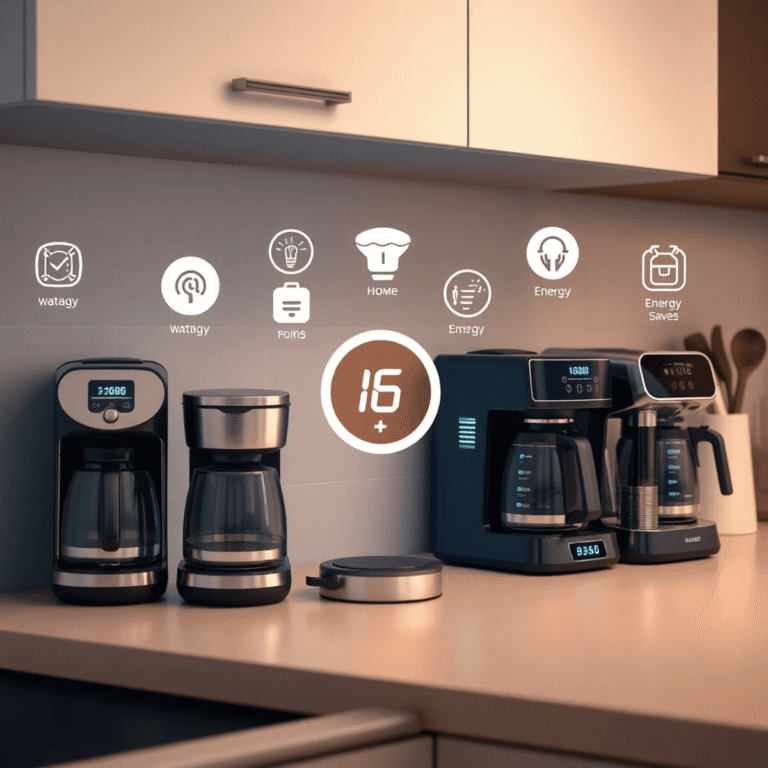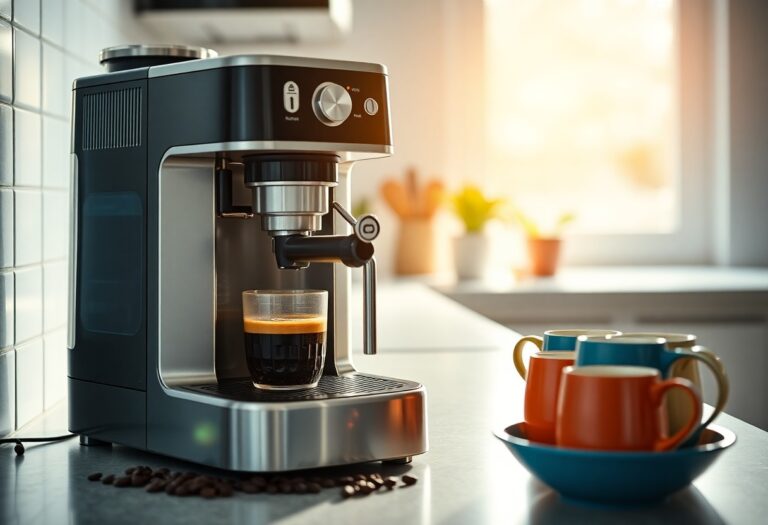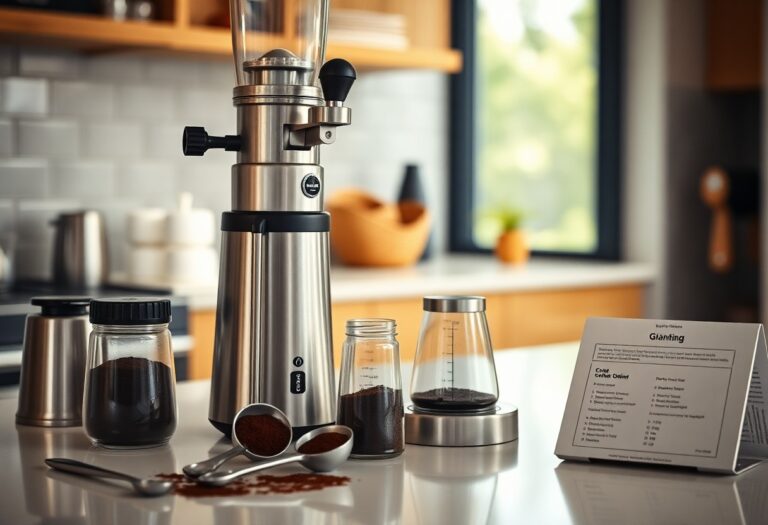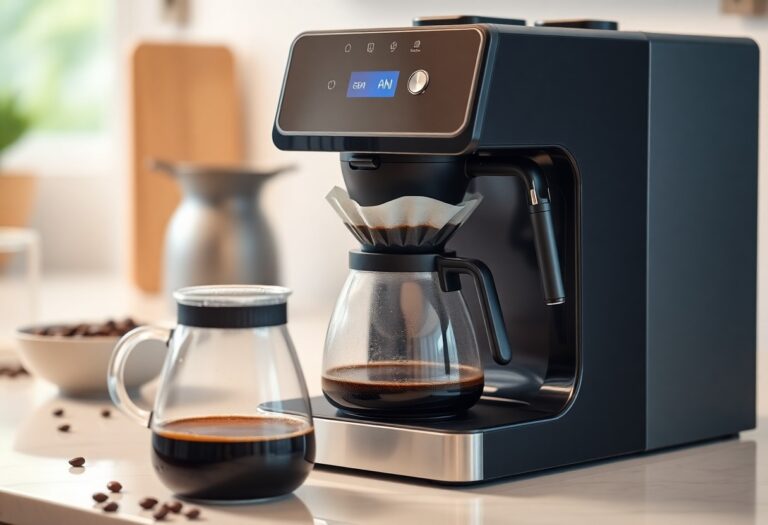What Coffee to Use in a Coffee Machine – General Bean Guide
You want the best cup of coffee brewing in your home, and choosing the right bean is key to achieving that. With so many options available, it’s important to focus on flavor profiles, roast levels, and grind sizes that suit your preferences. In this guide, you’ll discover how to select the perfect coffee beans for your machine, ensuring a delicious and satisfying experience with every cup. From espresso to drip, we’ll help you navigate through your options to find the blend that brings out the best in your coffee routine.

Key Takeaways:
- Select your coffee beans based on the brewing method of your coffee machine, with options like drip, espresso, or French press requiring different grind sizes and flavors.
- Opt for whole beans for the freshest flavor and aroma; grind them just before brewing for optimal taste.
- Consider the roast level of the beans: light roasts tend to be more acidic and fruity, while dark roasts provide a bolder, richer flavor.
- Look for high-quality, specialty-grade coffee to enhance the overall experience; look for certifications like Fair Trade or organic.
- Experiment with different bean origins and blends to discover personal preferences; regional characteristics can greatly impact flavor profiles.
Demystifying Coffee Beans: The Heart of Brew Quality
The choice of coffee beans directly influences your brewing experience and the final taste of your cup. From the moment the beans are sourced to how they’re roasted, every step affects the flavor, aroma, and quality. Understanding these factors allows you to select the beans that align with your brewing method and personal preferences, enhancing your overall coffee enjoyment.
Exploring Arabica vs. Robusta: Flavor Profiles and Benefits
Arabica and Robusta beans offer distinct flavor profiles that cater to varying tastes. Arabica is known for its smooth, sweet taste with hints of fruit and sugar, making it a favorite for specialty coffee. In contrast, Robusta beans have a stronger, more bitter flavor and higher caffeine content, which is ideal for those who prefer a bold cup or a rich crema in espresso. Each type has its unique benefits, influencing both the brewing process and your final drink.
The Role of Origin: Terroir and Its Impact on Taste
The concept of terroir plays a significant role in how climate, soil, and altitude affect the taste of coffee beans. Coffee grown in regions such as Ethiopia often boasts floral and fruity notes due to high altitude and volcanic soil, whereas beans from Brazil typically exhibit nutty, chocolatey flavors thanks to its lower altitude and diverse farming practices. A coffee’s origin not only informs its flavor profile but also connects you to the unique culture and traditions of its growing region.
By understanding terroir, you can appreciate the incredible diversity in coffee offerings. For instance, Jamaican Blue Mountain coffee, grown in the misty Blue Mountains, is celebrated for its mild flavor and lack of bitterness. Alternatively, Sumatran coffees are known for their earthy, herbal notes resulting from the island’s wet climate and unique processing methods. When you select coffee based on its origin, you engage with a broader narrative of flavor, culture, and sustainability, enriching your coffee-drinking experience.

Grind Size Matters: Tailoring Your Brew
The grind size of your coffee beans significantly influences the flavor and strength of your brew. Different coffee machines and brewing methods require specific grind sizes to optimize extraction and taste. For instance, espresso machines demand a fine grind, while French presses thrive on coarser grounds. Understanding your machine’s requirements is necessary for achieving the desired result. To discover more on this topic, check out our Coffee Roasts Guide: A Perfect Espresso – Everything You Need to Know.
Finding the Perfect Grind for Your Machine
Your coffee machine’s performance hinges on selecting the right grind size. Pour-over brew methods require a medium grind to allow optimal water flow, while moka pots benefit from a slightly finer texture. Each variation impacts your brewing time and extract ratios, ultimately affecting the taste and aroma. Experimenting with grind settings will help you find the perfect match for your machine.
The Impact of Grind Consistency on Extraction
Inconsistent grinding leads to uneven extraction, resulting in a lackluster cup of coffee. When some coffee particles are over-extracted and others are under-extracted, you’ll notice undesirable bitter or sour flavors. For instance, a high-quality burr grinder excels in providing a uniform grind, ensuring that each coffee ground contributes equally to the brewing process. Consistency in grind not only enhances overall flavor but also transforms your coffee-drinking experience.
A study highlighted that even slight variations in coffee grind size can create noticeable distinctions in taste. For example, a cup made from irregularly sized grounds can express a muddled flavor profile, while one produced with a consistent grind might showcase a harmonious blend of coffee notes. This emphasizes that investing in a quality grinder that delivers uniform results pays off in flavor complexity and balance. Strive for excellence in your grind, and your daily cup will reward you with a fuller experience.
Roast Levels: Unlocking Flavor Dimensions
Exploring roast levels unlocks a world of flavor dimensions in your coffee experience. Each roast level boasts unique characteristics that influence acidity, body, and taste. Light roasts offer bright, fruity notes, while dark roasts provide deeper, richer flavors with a hint of bittersweet intensity. Understanding these nuances helps you choose the perfect coffee beans to match your personal taste and brewing method.
Light vs. Dark Roasts: What Each Brings to Your Cup
Light roasts are celebrated for their bright acidity and fruit-forward flavors, often showcasing the beans’ unique origins. In contrast, dark roasts deliver a bold, robust flavor profile with a deep body, often masking the bean’s inherent characteristics. Your choice between these two extremes will significantly influence the taste experience of your cup.
The Art of Medium Roasts: The Best of Both Worlds
Medium roasts strike an exquisite balance between the vibrant notes of light roasts and the rich intensity of dark roasts. These beans typically feature a moderate level of acidity and a fuller body, allowing the complexities of the coffee’s origin to shine through without overwhelming bitterness. As a result, medium roasts often appeal to a wide range of palates, making them a versatile choice for various brewing methods.
Embracing medium roasts can elevate your coffee experience by offering rich chocolatey notes paired with hints of caramel and fruit. For instance, a medium roast Ethiopia Yirgacheffe might present floral undertones and lemon brightness, while a medium-roasted Colombian coffee can delight with nutty sweetness and a smooth finish. This versatility allows you to explore different flavor profiles without sacrificing quality or intensity. Whether using a drip coffee maker or an espresso machine, medium roasts adapt well, enhancing your daily brewing ritual.
Freshness Factor: Why It Can’t Be Overlooked
The freshness of your coffee beans plays a pivotal role in the overall taste and aroma of your brew. Freshly roasted beans, ideally used within two to four weeks of roast date, offer vibrant flavors and rich profiles. Stale beans, on the other hand, can lead to dull and lifeless cups, compromising your morning ritual. Using freshly roasted coffee can transform your coffee experience from ordinary to extraordinary, so prioritizing freshness is crucial.
The Science of Staleness: How Time Affects Flavor
As time passes, coffee beans undergo oxidation, which gradually diminishes their flavor and aroma. Within just a week of roasting, volatile compounds that contribute to taste and scent start to degrade. After 2-3 weeks, the coffee may taste flat or sour, losing the complex notes that fresh beans offer. This process emphasizes the need for timely consumption and proper storage to maintain the essence of your coffee.
Best Practices for Storing Coffee for Optimal Freshness
To keep your coffee beans fresh, store them in an airtight container in a cool, dark place away from direct sunlight and moisture. Avoid exposure to heat, as it can accelerate staleness. It’s wise to purchase beans in small batches that align with your usage frequency, ideally whole beans to grind just before brewing. Incorporating these practices will help preserve the natural oils and flavors of the coffee, ensuring every cup tastes its best.
Investing in a quality storage solution, such as a vacuum-sealed container or specialty coffee canister, can significantly extend freshness. Aim to store your coffee at room temperature, as placing it in the fridge or freezer can create moisture issues when you frequently open the container. By selecting the right storage practices, you’re setting the stage for a memorable coffee experience every time you brew.
Brewing Techniques: A Guide to Machine Compatibility
Understanding the specific brewing techniques utilized by your coffee machine is vital for achieving the best results. Different machines operate under varying parameters, and knowing how these affect your coffee is key. Factors such as pre-infusion time, brewing pressure, and water temperature must align appropriately with the beans you select to extract maximum flavor and aroma. The compatibility between your machine’s mechanics and the type of coffee you use will ultimately define your coffee experience.
Understanding Pre-Infusion, Pressure, and Temperature
The brewing process involves intricate elements that affect extraction:
| Factor | Description |
| Pre-Infusion | Allows coffee grounds to bloom, enhancing flavor extraction. |
| Pressure | Ideal for espresso is around 9 bars; impacts the extraction rate. |
| Temperature | Optimal brewing temperature ranges from 195°F to 205°F (90°C – 96°C). |
Customizing Coffee to Match Your Machine’s Specifications
Your coffee machine likely has unique specifications that can affect the brewing outcome. Understanding these will allow you to customize your coffee for exceptional results. Selecting the appropriate grind size, adjusting the brewing time, and monitoring the water temperature can dramatically influence flavor profiles. By knowing how your specific machine operates, you can select the right beans and optimize your brewing technique for a perfectly tailored cup.
For instance, if your machine features a pre-infusion mode, using a coarser grind can benefit flavor extraction as water first saturates the grounds before high-pressure brewing. Alternatively, a machine that operates at higher pressures might necessitate a finer grind to prevent over-extraction. Experimenting with different bean origins can also yield varied results based on how each type interacts with your machine’s unique brewing capabilities. Understanding these nuances allows you to brew with precision, maximizing flavor while aligning with your coffee machine’s design.
Conclusion
With this in mind, selecting the right coffee beans for your coffee machine can significantly enhance your brewing experience. Consider your flavor preferences, whether you prefer a light, medium, or dark roast, and opt for fresh, high-quality beans for the best results. Grinding your beans just before brewing can also unlock a richer taste. By aligning your choices with your personal tastes, you can ensure each cup of coffee is tailored to your liking, leading to an enjoyable ritual that starts your day on the right note.
FAQ
Q: What are the main types of coffee beans?
A: The two primary types of coffee beans are Arabica and Robusta. Arabica beans are known for their smooth, complex flavor profile and are typically grown at higher altitudes. They account for about 60-70% of the world’s coffee production. Robusta beans, on the other hand, have a stronger, more bitter taste and contain more caffeine. They are often used in espresso blends and are cheaper to produce, making them a popular choice for instant coffee.
Q: How do I know which roast level to choose for my coffee machine?
A: Coffee beans come in various roast levels including light, medium, and dark. Light roasts tend to have a higher acidity and retain more of the original coffee flavors, making them ideal for drip coffee machines. Medium roasts strike a balance between acidity and boldness, offering a rounded flavor, suitable for most coffee machines. Dark roasts have a robust, smoky flavor and lower acidity, which can be preferable for espresso machines and those who enjoy a stronger taste.
Q: Is it better to use whole beans or pre-ground coffee?
A: Using whole beans is generally preferred for the freshest coffee experience. Whole beans retain their necessary oils and flavors better than pre-ground coffee, which can become stale quickly. Freshly grinding your beans right before brewing helps to extract the maximum flavor. However, pre-ground coffee is more convenient and can still deliver a decent taste if used promptly after grinding.
Q: How fine should I grind my coffee beans for different brewing methods?
A: The grind size of your coffee beans greatly impacts the extraction process and the final flavor. For espresso, use a fine grind to allow for pressure extraction. For drip coffee machines, a medium grind works best as it balances the extraction time. French press requires a coarse grind to prevent over-extraction due to its longer brewing time. Adjusting the grind size for your specific brewing method enhances the overall experience.
Q: What blends should I consider for a coffee machine?
A: The choice of blends can enhance the flavor of your coffee depending on your personal preference. For a richer, bolder taste, consider blends that include Robusta beans. For a smoother taste, look for blends that emphasize Arabica beans. Popular blends include house blends that feature a combination of different origin beans for complexity, or single-origin coffees that showcase distinct flavor notes from specific regions. Experimenting with different blends can help you find the perfect match for your taste.







